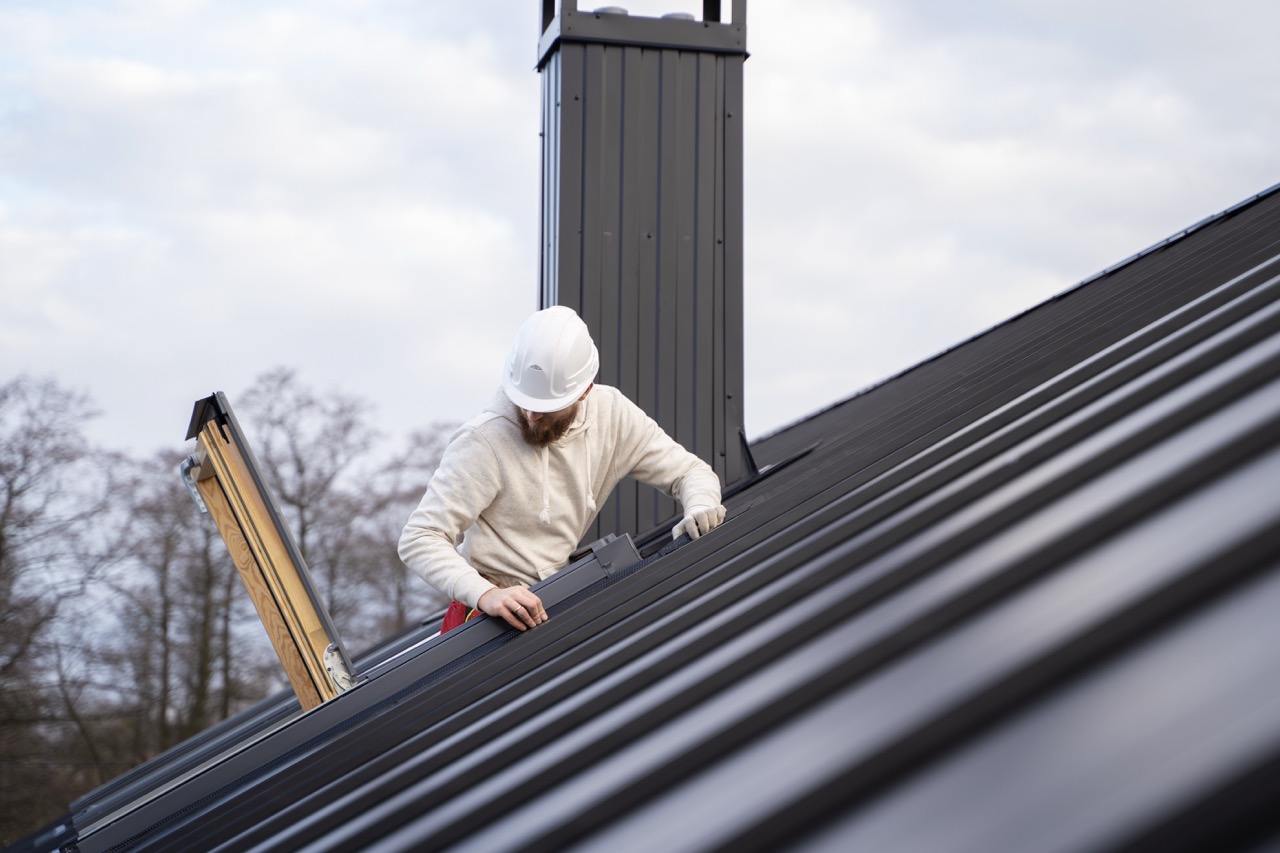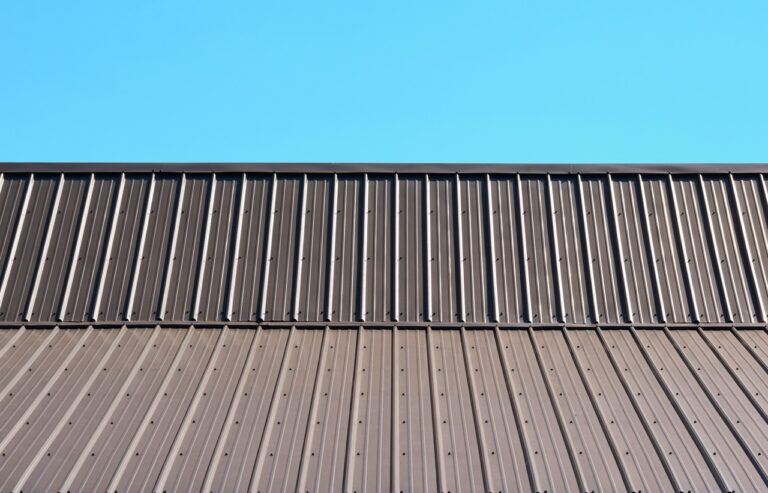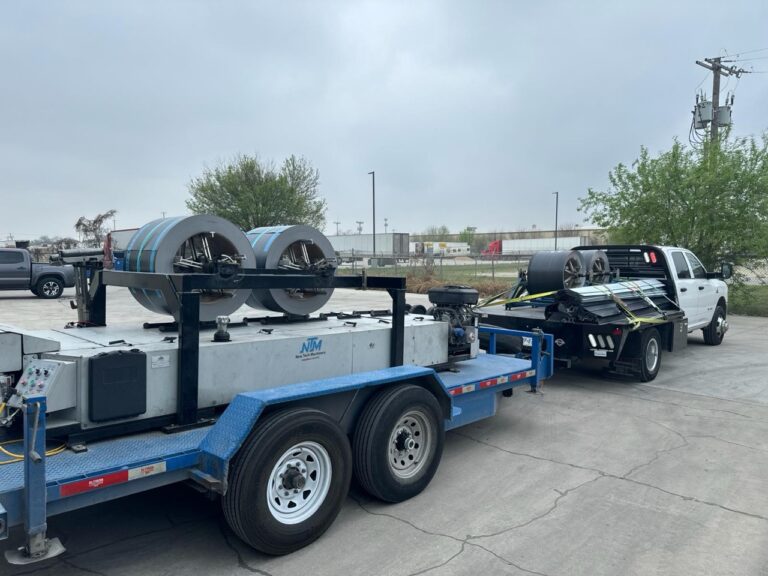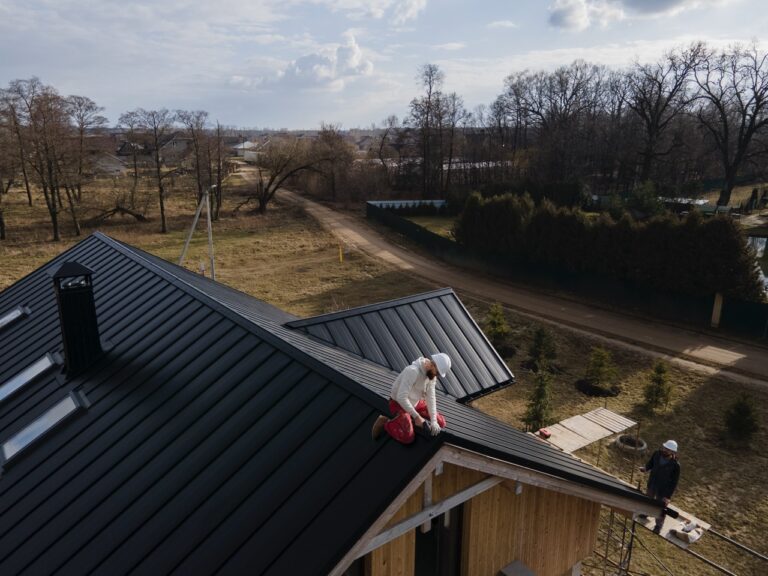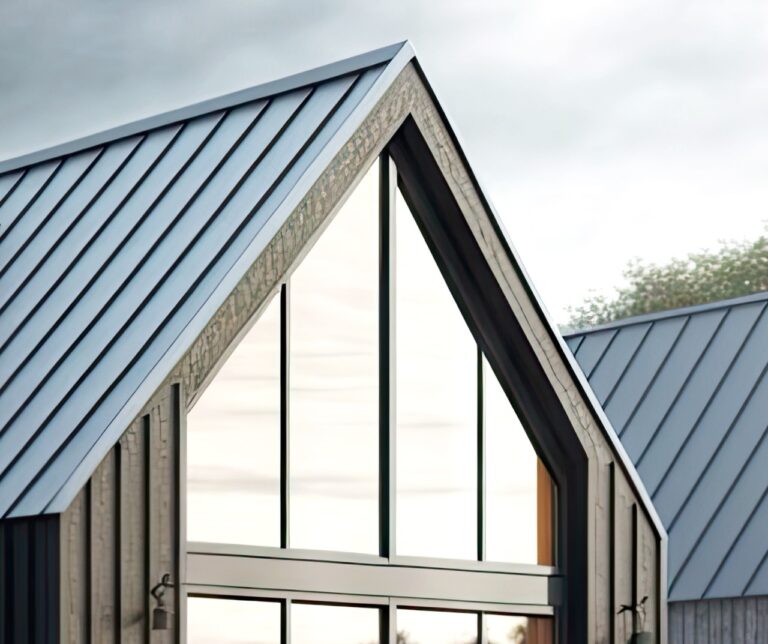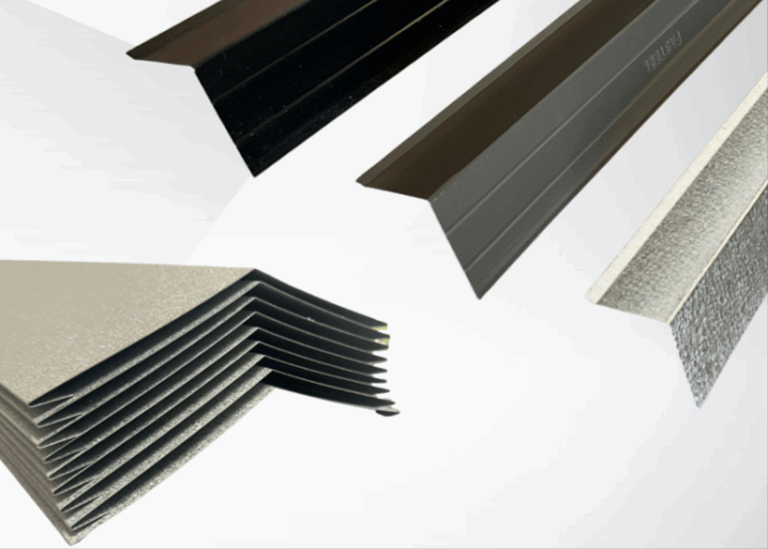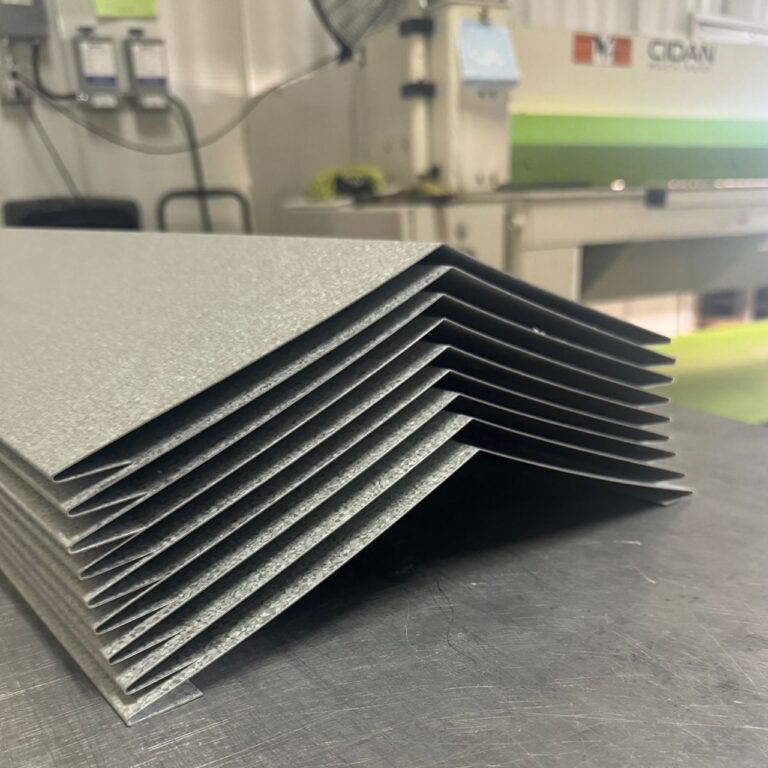When you invest in metal roofing panels for your Texas home, you’re choosing a durable, energy-efficient solution that can withstand our challenging climate. However, even the most robust metal roofing panels require proper maintenance to maximize their lifespan and performance.
In this comprehensive guide, we’ll explore practical maintenance strategies for different types of metal roofing panels in San Antonio and Houston, helping you protect your investment for decades to come.
Understanding Texas Climate Challenges for Metal Roofing panels
Texas weather presents unique challenges for metal roofing systems. In San Antonio and Houston, your metal roof faces intense summer heat, occasional hail storms, hurricane-force winds, and even unexpected freezing conditions like the 2021 winter storm.
These diverse weather patterns affect different types of metal roofing panels in various ways:
- Extreme Heat: While metal roofs excel at reflecting sunlight and heat (especially with proper cool-roof coatings), prolonged exposure to 100°F+ temperatures can accelerate coating degradation over time.
- High Humidity: Houston’s notorious humidity can contribute to condensation issues under improperly ventilated metal roofs, potentially leading to corrosion from the underside.
- Severe Storms: From Gulf Coast hurricanes to intense thunderstorms, wind-driven rain can test your metal roof’s seams and flashings, while hail may cause cosmetic or structural damage depending on the metal type.
- Salt Exposure: Coastal properties near Galveston face additional challenges from salt air, which can accelerate corrosion on certain metal roof types if not properly maintained.
Understanding these regional climate factors helps you focus your maintenance efforts on the most vulnerable aspects of your metal roofing panels.
<a id=”seasonal”></a>
Essential Seasonal Maintenance Tasks
Spring Maintenance (March-May)
Spring in Texas brings rain and the beginning of storm season. Focus on these tasks to better maintain your metal roofing panels:
- Clear debris from gutters, valleys, and roof surfaces
- Check for winter damage including any loose fasteners or panels
- Inspect all flashing around chimneys, vents, and transitions
- Look for signs of water intrusion in the attic or ceiling
Summer Maintenance (June-August)
During intense Texas summers:
- Check attic ventilation to ensure proper airflow and prevent heat buildup
- Inspect for heat-related expansion issues at seams and transitions
- Look for fading or chalking of roof coatings
- Check for loose fasteners that may have worked loose due to thermal expansion
Fall Maintenance (September-November)
As storm season winds down:
- Remove fallen leaves from roof surfaces and drainage systems
- Check for storm damage from summer weather events
- Ensure gutters and downspouts are clear for winter rains
- Trim overhanging branches before winter storms
Winter Maintenance (December-February)
Even in our mild Texas winters:
- Check for ice dam potential in rare freezing conditions
- Inspect roof penetrations for proper sealing
- Look for condensation issues in the attic during cold snaps
- Ensure drainage systems are functioning properly
By following this seasonal maintenance calendar, you’ll address potential issues before they become costly problems for your metal roofing panels.
<a id=”materials”></a>
Maintaining Different Metal Roofing Materials
Different metal roofing panels require specific maintenance approaches to maximize their longevity:
Galvalume Steel Maintenance
Galvalume (steel coated with an aluminum-zinc alloy) is one of the most popular metal roofing panels choices in Texas due to its affordability and durability. To maintain:
- Inspect for scratches in the protective coating that could lead to corrosion
- Check fasteners for rust that could spread to panels
- Clean with mild soap and water annually to remove dirt and pollutants
- Avoid contact with copper, brick cleaning solutions, and pressure-treated lumber which can cause galvanic corrosion
Aluminum Metal Roof Maintenance
Aluminum roofing resists corrosion naturally, making it ideal for coastal areas like Galveston or Corpus Christi properties:
- Rinse with fresh water periodically if within one mile of saltwater
- Check for mechanical damage as aluminum is softer than steel
- Inspect for loose fasteners more frequently as aluminum expands and contracts more than steel
- Clean with non-abrasive methods to avoid scratching the surface
Copper Metal Roof Maintenance
Copper develops a beautiful patina over time but requires specific maintenance:
- Allow natural patination – avoid cleaning agents that might interfere with this process
- Check for dissimilar metal contact which can cause galvanic corrosion
- Inspect for mechanical damage or bent edges
- Clean only when necessary with very mild pH-neutral soap and water
Zinc Metal Roof Maintenance
Zinc roofing forms a protective patina similar to copper:
- Inspect for areas where patina hasn’t formed evenly
- Check for oil canning (waviness in panels)
- Ensure proper ventilation underneath to prevent white rust
- Clean with gentle detergent and avoid acidic or strong alkaline cleaners
Regardless of material, all metal roofs benefit from regular gentle cleaning and prompt addressing of any visible issues.
<a id=”coatings”></a>
Preserving Metal Roof Coatings and Finishes
Your metal roof’s coating is its first line of defense against the elements, particularly important in our harsh Texas sun:
PVDF (Kynar 500®/Hylar 5000®) Coating Maintenance
These premium finishes offer the best UV and weather resistance:
- Clean annually with a mild detergent solution
- Rinse thoroughly to remove cleaning agents
- Monitor for chalking (a powdery residue) which indicates coating breakdown
- Address scratches promptly with manufacturer-approved touch-up paint
SMP (Silicone-Modified Polyester) Coating Care
Common on many residential metal roofs:
- Clean more frequently (every 6-12 months) as these coatings are more susceptible to dirt buildup
- Check for faster color fading particularly in south-facing sections
- Avoid pressure washing which can damage the finish
- Consider recoating after 15-20 years in harsh sun exposure areas
Clear Coat Maintenance for Specialty metal roofing panels
For metals with natural finishes like copper or zinc:
- Determine if clear coating exists before cleaning
- Use only products approved for the specific clear coat
- Check for areas where coating has failed and address promptly
- Reapply clear coat according to manufacturer recommendations
Uncoated Metal Maintenance
For weathering steels (like Cor-Ten) or natural metals:
- Monitor patina development for uniformity
- Ensure proper drainage from the roof surface
- Keep landscape plantings trimmed back to allow airflow
- Remove debris regularly to prevent moisture retention
The Texas sun can be particularly harsh on roof coatings, making this aspect of maintenance especially important for San Antonio and Houston homes.
<a id=”issues”></a>
Addressing Common Metal Roof Issues in Texas
Preventing and Addressing Oil Canning
Oil canning (visible waviness in metal panels) isn’t structural but affects appearance:
- Inspect panel tensioning during routine maintenance
- Check for improper installation that may exacerbate the issue
- Monitor during extreme temperature changes when it may be more pronounced
- Consider tension straps or stiffeners if severely affected
Managing Expansion and Contraction
Metal roofing panels naturally expand and contract with temperature changes:
- Inspect fastener tightness seasonally
- Look for warped or bent panels that indicate fastener issues
- Check seams and overlaps for separation
- Ensure proper installation techniques were used that allow for movement
Preventing Galvanic Corrosion
When dissimilar metals contact each other:
- Inspect areas where different metals meet (flashing, fasteners, gutters)
- Look for unusual corrosion or staining
- Check for proper isolation between incompatible metals
- Replace incompatible fasteners with correct types
Managing Condensation Issues
Particularly important in humid Houston:
- Check attic ventilation systems regularly
- Inspect underlayment and moisture barriers for proper installation
- Look for signs of moisture on the roof deck underside
- Consider adding ventilation improvements if condensation is occurring
Addressing these common issues promptly prevents them from developing into more serious problems that could compromise your roof’s integrity.
<a id=”professional”></a>
Professional vs. DIY Metal Roof Maintenance
DIY-Appropriate Maintenance Tasks
Many maintenance tasks are suitable for homeowners:
- Visual inspections from the ground using binoculars
- Cleaning gutters and removing debris from accessible areas
- Light cleaning of roof surfaces with appropriate methods
- Documenting and photographing potential issues for professionals
When to Call Professional Roofers
Some situations require professional expertise:
- Walking on the metal roofing panels which can be dangerous and may damage panels
- Seam and flashing repairs requiring specialized knowledge
- Replacement of damaged panels or sections
- Recoating or refinishing when needed
- After major storms for thorough damage assessment
Finding Qualified Metal Roof Specialists in Texas
Not all roofers specialize in metal roofing:
- Look for specific metal roofing certifications
- Check manufacturer-approved installer lists
- Request references from similar projects
- Verify proper insurance and warranties for metal roof work
Building a Maintenance Relationship
The best approach combines homeowner vigilance with professional expertise:
- Schedule regular professional inspections (typically every 2-3 years)
- Keep records of all maintenance and professional visits
- Establish a relationship with a trusted metal roofing company
- Consider a maintenance contract for scheduled professional care
This partnership approach ensures your metal roof receives appropriate care while avoiding the risks of DIY repairs that could void warranties or cause damage.
<a id=”extending”></a>
Extending Your Metal Roof’s Lifespan in Extreme Weather
Texas weather can be particularly challenging for roofing systems, but proper preparation can minimize damage:
Hurricane Preparedness for Metal Roofs
For Gulf Coast homes especially:
- Pre-season inspection of all fasteners and seams
- Reinforcement of edge details where wind uplift begins
- Removal of potential projectiles from yard before storms
- Documentation of roof condition for insurance purposes
Hail Damage Prevention and Repair
Central Texas sees significant hail events:
- Choose impact-resistant metal panels during installation
- Inspect for dents and finish damage after hailstorms
- Address protective coating damage promptly
- Understand insurance coverage for cosmetic vs. functional damage
Managing Heat-Related Stress
Our famous Texas heat affects roofing significantly:
- Ensure proper attic ventilation to reduce heat transfer
- Consider radiant barriers under metal roofing
- Maintain reflective coatings for maximum heat rejection
- Allow for proper expansion in roof design and maintenance
Freeze Protection Measures
After the 2021 winter storm, more homeowners are preparing for rare freezes:
- Check insulation levels in attic spaces
- Ensure proper sealing around penetrations
- Address ice dam potential at eaves
- Inspect for damage after freeze-thaw cycles
By preparing your metal roof for these extreme conditions, you’ll significantly extend its useful life despite our challenging Texas climate.
<a id=”cleaning”></a>
Metal Roof Cleaning Best Practices
Proper cleaning preserves both appearance and functionality:
Safe Cleaning Methods for Metal Panels
Protect your investment with appropriate techniques:
- Use soft bristle brushes or cloth for manual cleaning
- Apply mild detergent solutions (1/4 cup detergent per gallon of water)
- Rinse thoroughly with clean water
- Work in small sections from top to bottom
What to Avoid When Cleaning
Prevent damage with these precautions:
- Never use abrasive tools like wire brushes or scrub pads
- Avoid pressure washers which can damage coatings and seams
- Don’t use bleach or harsh chemicals unless specifically approved
- Avoid working in direct sunlight when cleaning solutions might dry too quickly
Removing Common Substances
Different contaminants require specific approaches:
- Pollen and dirt: Mild detergent solution and soft cloth
- Tree sap: Isopropyl alcohol (test on inconspicuous area first)
- Algae or moss: Diluted bleach solution (1:3 with water) applied carefully
- Bird droppings: Prompt removal with soap and water to prevent coating damage
Maintaining a Clean Roof Between Washings
Preventative measures reduce cleaning frequency:
- Trim overhanging branches to reduce debris and organic matter
- Install leaf guards on gutters to prevent backup
- Consider zinc or copper strips at ridges to inhibit moss and algae
- Rinse with plain water occasionally to remove light dirt
With proper cleaning techniques, your metal roof will maintain its appearance and protective qualities for decades.
<a id=”inspections”></a>
When to Schedule Professional Inspections
Regular professional inspections are key to long-term metal roofing panels performance:
Recommended Inspection Schedule
- Biennial baseline inspections (every 2 years) for newer roofs
- Annual inspections for roofs over 15 years old
- Post-storm inspections after significant weather events
- Pre-winter inspections to ensure readiness for rainy season
What Professional Inspectors Look For
Trained specialists check:
- Seam integrity at panel connections
- Fastener condition throughout the roof
- Flashing details around penetrations and transitions
- Underlayment performance where visible
- Structural issues that might affect roof performance
- Ventilation adequacy for condensation prevention
- Coating condition and remaining service life
Documentation to Maintain
Keep these records for continuity of care:
- Detailed inspection reports with photographs
- Records of all repairs and maintenance performed
- Warranty information and maintenance requirements
- Contact information for your roofing professional
Warning Signs Between Inspections
Call your roofer if you notice:
- Interior water stains or leaks
- Visible damage or displaced panels from the ground
- Excessive noise during wind or temperature changes
- Visible rust or corrosion developing anywhere on the roof
Professional inspections catch problems early when repairs are simpler and less expensive.
<a id=”cost-saving”></a>
Cost-Saving Maintenance Tips for Metal Roof Owners
Smart maintenance saves money over your roof’s lifetime:
Preventative vs. Reactive Maintenance Costs
- Regular maintenance typically costs 1-2% of roof replacement annually
- Emergency repairs can cost 5-10x more than planned maintenance
- Extending roof life through maintenance delays replacement costs
- Maintained roofs retain warranties preventing out-of-pocket expenses
Energy Efficiency Maintenance
Keep your roof working efficiently:
- Maintain reflective coatings to maximize energy savings
- Keep roof surface clean for better solar reflection
- Ensure proper ventilation to reduce cooling costs
- Check and maintain insulation levels in the attic
Insurance Considerations
Protect your coverage:
- Document all maintenance to demonstrate proper care
- Understand policy requirements for maintaining coverage
- Request roof certification after professional inspections
- Report storm damage promptly to facilitate claims
Long-Term Cost Planning
Think ahead:
- Budget for regular maintenance as part of homeownership costs
- Plan for eventual recoating of metal panels (typically 20+ years)
- Consider maintenance agreements with qualified contractors
- Address small issues before they become expensive problems
With proper maintenance, your metal roof can deliver decades of performance with minimal lifetime costs compared to other roofing materials.
Conclusion: Protecting Your Metal Roofing panel Investment
Your metal roofing panel represents a significant investment in your Texas home’s protection, energy efficiency, and curb appeal. By implementing a consistent maintenance program tailored to our unique climate challenges in San Antonio and Houston, you can ensure your roof delivers its full 40-50 year potential lifespan.
Remember that the most effective approach combines homeowner vigilance with periodic professional care. By addressing small issues promptly, cleaning appropriately, and preparing for our extreme weather events, you’ll maximize your roof’s performance while minimizing lifetime costs.
If you have questions about your specific metal roof system or would like to schedule a professional inspection, contact our experienced team serving San Antonio and surrounding communities by visiting us at fasteelmrs.com
FAQs
How often should I clean my metal roof in the Texas climate?
Can I walk on my metal roof to perform maintenance?
How can I tell if my metal roof has hail damage?
Will my metal roof rust if it gets scratched?
How should I prepare my metal roof for hurricane season in Texas?
Can I pressure wash my metal roof?
How do I prevent algae growth on my metal roof in humid areas?
What should I do if I find a leak in my metal roof?
How long should my metal roof last in the Texas climate?
Can I repaint my faded metal roof?
——————-
With more than 50 years of experience in manufacturing and metal roof installation, Fasteel – Metal Roof Solutions designs, manufactures, and distributes metal roofing products, including coils, flat sheets, panels, trims, and accessories. Our services include breaking metal, on-site manufacturing, small batch production, and plans and blueprint interpretation to ensure the most accurate estimate. With manufacturing facilities and warehouses in San Antonio and Houston, we cover the entire Dallas, Austin, San Antonio, and Houston metroplex area. In addition, we have a fleet of high-tech roll formers that allows us to expand our coverage to anywhere in the continental United States of America.

